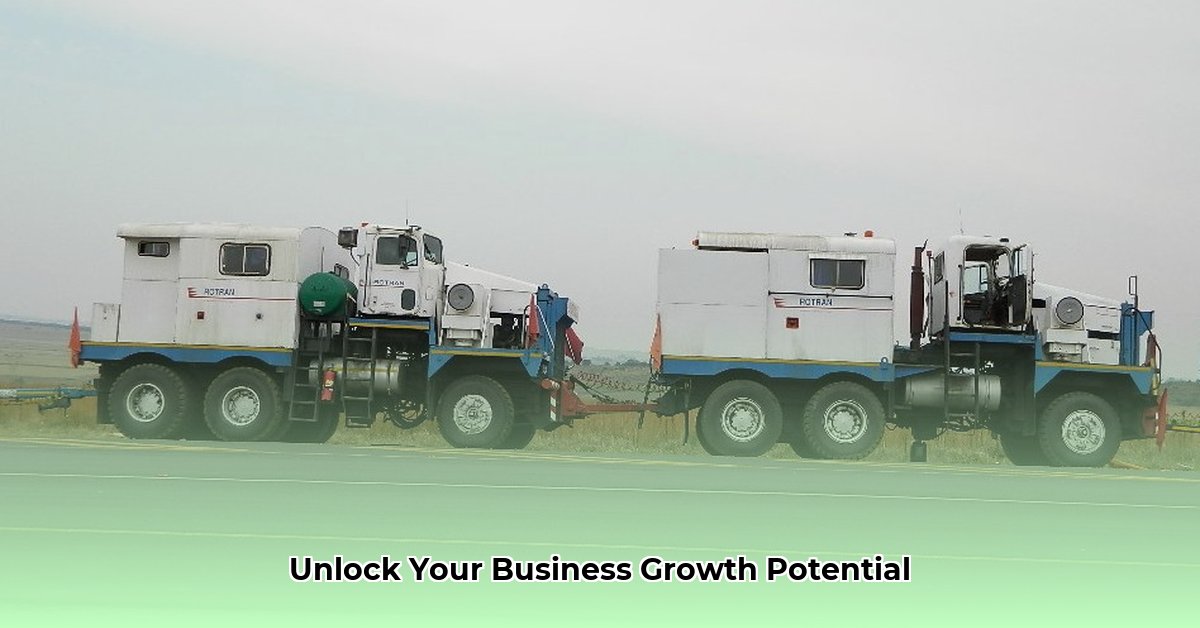
Current Situation Analysis: Identifying Opportunities for Growth
Pacific Truck & Tractor (PTT) enjoys a strong reputation for quality workmanship and a dedicated team. However, a lack of key performance indicators (KPIs) hinders strategic planning and limits growth potential. Without tracking crucial metrics, such as repair times, customer satisfaction, and market share, informed decision-making becomes challenging. This lack of data-driven insights prevents PTT from identifying and addressing operational inefficiencies and untapped opportunities. For example, are repair times exceeding industry averages? What is the customer churn rate? Are there specific service areas with higher profit margins that could be expanded upon? Addressing these questions is critical for future success. For additional resources on used trucks and tractors, check out this helpful resource.
Actionable Strategies: A Multi-Stakeholder Approach
This section outlines actionable strategies for key stakeholders at PTT – management, employees, customers, and competitors. Implementing these steps will lead to improved operational efficiency and sustained growth.
Management: Driving Strategic Initiatives
- Implement KPIs: Track key metrics: repair times, customer satisfaction (via surveys), parts usage/replenishment rates, and employee turnover rates. This data will highlight areas needing improvement and inform strategic decisions. What impact would a 10% reduction in repair time have on overall profitability?
- Strategic Partnerships: Collaborate with parts suppliers and Original Equipment Manufacturers (OEMs). These partnerships secure better pricing and reliable parts supply, streamlining operations. How would access to preferential pricing on high-demand parts reduce operational costs?
- Technological Upgrades: Invest in advanced diagnostic software and tools. This quickens repairs, improves accuracy, minimizes downtime, and enhances customer satisfaction. What is the return on investment (ROI) of upgrading to the latest diagnostic technology compared to current methods?
Employees: Empowering the Workforce
- Upskilling: Invest in training programs to equip mechanics with cutting-edge diagnostic and repair skills. This improves employee value and retention. What is the estimated impact of upskilling on employee performance and customer satisfaction?
- Career Growth: Create clear career progression paths and opportunities within PTT to enhance employee motivation and reduce turnover. How does the implementation of clear career paths affect employee retention rates?
- Competitive Compensation: Regularly review employee compensation packages to ensure competitiveness within the local market. Happy employees are productive employees. What is the correlation between fair compensation and employee retention within the heavy-duty truck repair industry?
Customers: Building Loyalty and Advocacy
- Online Booking: Implement a user-friendly online booking system to simplify scheduling and improve customer experience. How does the availability of online booking influence customer satisfaction and appointment scheduling efficiency?
- Transparent Pricing: Clearly present pricing information on the company website to build trust and reduce customer anxiety. What is impact of transparent pricing on customer trust and long-term loyalty?
- Loyalty Program: Develop a rewards program offering discounts or special offers to repeat customers, fostering loyalty and advocacy. How might a well-structured loyalty program impact customer retention rates?
Competitors: Maintaining a Competitive Edge
- Competitive Analysis: Regularly monitor competitors' offerings (pricing, services, etc.) to identify market gaps and unmet needs. What insights can be gained by analyzing competitor strategies and market trends, particularly regarding service offerings?
- Specialized Services: Offer niche services (e.g., repairs for specific truck models or specialized diagnostics) to differentiate PTT and attract specific customer segments. What is the potential ROI of implementing a specialized service compared to the existing service offerings?
- Service Speed: Prioritize quick turnaround times to enhance reputation and customer satisfaction. How does faster service impact customer satisfaction and word-of-mouth referrals?
Implementation Considerations: Practical Challenges and Solutions
Successful implementation requires careful consideration of budget allocation, resource availability, and a realistic timeline. Prioritize high-impact initiatives and phase in changes gradually to avoid overwhelming the team. Regular progress monitoring and necessary adjustments are vital.
Monitoring and Evaluation: Measuring Success
Regularly track KPIs (repair times, customer satisfaction, etc.) to measure the effectiveness of implemented strategies. Data analysis will inform ongoing improvements and refine future strategic decisions. Establish clear benchmarks and targets to gauge progress against objectives. This continuous monitoring and evaluation are crucial for sustaining growth and improving efficiency.
Conclusion: Driving Continuous Improvement
By implementing the outlined strategies and leveraging data-driven decision-making, Pacific Truck & Tractor can significantly enhance operational efficiency and achieve substantial growth. Consistently adapting to industry changes and striving for continuous improvement are key to long-term success within the dynamic heavy-duty truck repair industry. Remember, a proactive and adaptable approach is essential for navigating the challenges and maximizing opportunities in this competitive landscape.